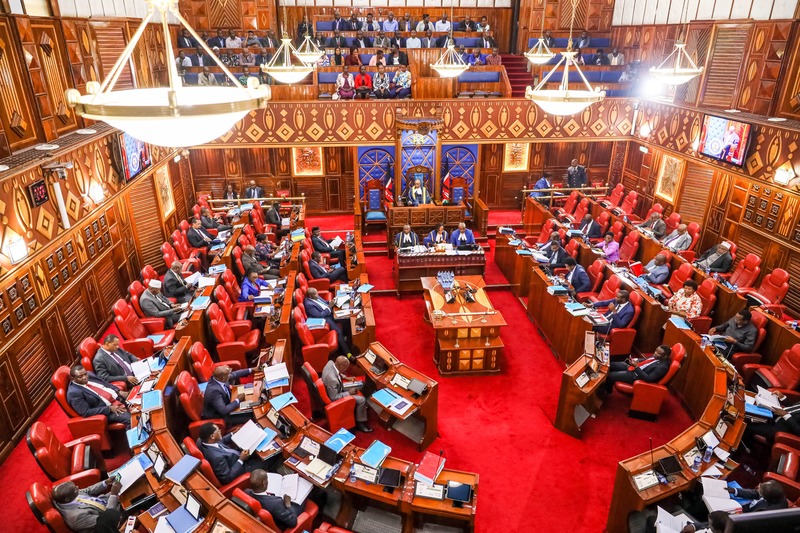SRC to evaluate feasibility of 35% wage bill rule for public bodies

The figure stood at 43.54 per cent in the financial year ending June 2023.
SRC to evaluate feasibility of 35% wage bill rule for public bodies
Universities, counties, and other public bodies have raised concerns over their ability to meet the 35 per cent wage bill cap, prompting the Salaries and Remuneration Commission (SRC) to launch a study assessing the practicality of the regulation.
More To Read
- Debt, wages devour 68 per cent of Kenya’s revenue, leaving citizens struggling - KHRC report
- Auditor General flags public universities over Sh62 billion wage bill
- Kenya losing over Sh600 billion in stalled public projects, says PMI
- Financial distress threatens devolution as counties struggle with bloated wage bills, delayed funds
- 41 counties breach wage limit despite SRC warnings
- 36 counties flagged for violating employment laws, mismanaging wage bills
The rule designed to keep government wage bills in check is now under review as institutions struggle to comply without compromising service delivery.
The SRC, which is tasked with regulating and advising on fair and sustainable public sector remuneration, acknowledged that some government entities—such as universities, training institutions, and county governments—are unable to adhere to the wage cap due to the nature and scope of their functions.
To address these concerns, the commission plans to conduct a study to determine whether the 35 per cent threshold is realistic and to propose sector-specific limits.
The cap is currently anchored in the Public Finance Management (PFM) Act of 2012 and the PFM Regulations of 2015.
According to SRC, some public institutions require a larger workforce, leading to higher wage bill ratios that exceed the prescribed limit.
“Determination of the realism of the 35 per cent wage bill-to-revenue ratio as required by the PFM Regulations per sector and at the national and county governments, and development of the ideal thresholds thereof, is expected to midwife the current fiscal dilemma between service delivery and compliance with this requirement,” SRC said in a tender notice for the study.
Wage bill ratios
The commission further noted that different public sectors would be guided on specific wage bill ratios to balance efficiency, productivity, and fiscal responsibility.
The review follows a resolution from the third National Wage Bill Conference held in September last year, where it was agreed that state institutions refine their financial strategies to achieve the 35 per cent wage bill-to-revenue target by June 2028. The figure stood at 43.54 per cent in the financial year ending June 2023.
Empirical evidence, SRC said, indicates that while commercial state agencies generally operate within lower wage bill ratios, public service institutions—particularly universities—often exceed 50 per cent.
Counties are also facing similar financial challenges. The commission pointed out that once counties establish their infrastructure, their primary expenditure shifts to operational costs, with salaries being the biggest component.
“For such institutions to adhere to the requirement, they are forced to either engage fewer employees—potentially compromising service delivery—or offer lower remuneration, which affects the attraction and retention of skilled professionals,” SRC said.
The findings from the study are expected to guide future policy decisions aimed at balancing fiscal discipline with efficient service delivery across different public institutions.
Top Stories Today










































